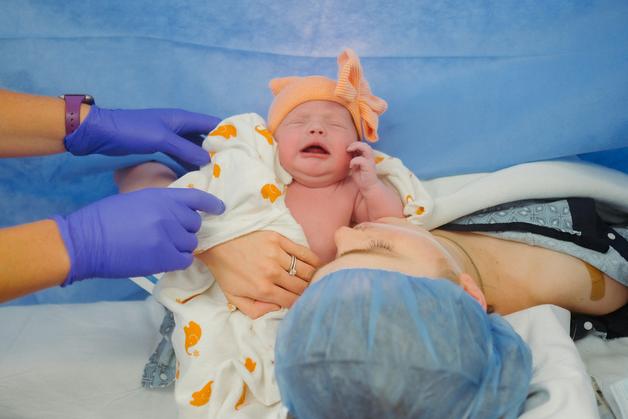Facing the decision of a scheduled cesarean section can spark a flurry of emotions—curiosity, relief, even a little unease. Parents often wonder: Is this procedure really necessary? Will my recovery be smooth, or brimming with unexpected hurdles? The prospect of surgery, with all its anticipation and protocol, has a way of crowding the mind. At the same time, the desire for a safe birth—for both mother and baby—remains firmly at the centre. Let’s demystify the journey: from the clinical reasons behind scheduling a cesarean, the hospital experience, the subtle nuances of recovery at home, to the emotional ripples that might linger long after the birth. Expect practical details, scientific clarity, and tangible steps, each explained with care, to empower your choices with confidence and peace of mind.
Scheduled Cesarean Section: Understanding the Decision
Envision a scenario where your doctor suggests a scheduled cesarean section—not as a last-minute resort, but as a carefully coordinated plan, usually set around 39 weeks. What triggers this decision? Often, the shift to a surgical birth is prompted by certain medical conditions: a baby breech (feet or bottom first, instead of head down), placenta previa (when the placenta covers the cervix), or the history of a previous cesarean section. Sometimes, the landscape is shaped by multiple pregnancies, uterine fibroids or other anatomical considerations, severe hypertension, uncontrolled diabetes, or active viral infections like untreated HIV or herpes.
But the story doesn’t always revolve around medical factors alone. A handful of parents—perhaps reflecting on a previous traumatic birth or wrestling with anxiety—choose a scheduled cesarean section after deep discussion with their care provider. Here, the value lies in knowing what to expect: discussing anesthesia upfront, assembling support, customising the birth environment as far as possible.
When labour hasn’t started, the operation tends to be performed under spinal or epidural anaesthesia. This means you’re awake, sometimes accompanied by a partner, able to witness the very first cries, the first fleeting moments of contact—a beautiful paradox: surgical, yet deeply intimate.
Planned vs Emergency Cesarean: Unravelling the Differences
Why does timing matter so much? A planned cesarean section lets you and your care team work together, almost symphonically, to set the stage. Detailed discussions, preoperative preparations—fasting, medical checks, pain relief planning—happen in a calm and controlled environment. In many hospitals, a support person can be present, making the birth experience personal and connected.
Contrast this with an emergency cesarean: decisions are made quickly, sometimes under stress. General anaesthesia may become necessary, so parents often meet their baby a little later, after waking from surgery. Preparation is swift—much less time for questions or familiar faces.
Scheduled Cesarean Section in Numbers and Trends
Globally, the proportion of deliveries ending in a scheduled cesarean section is rising. Today, roughly 30% of all births in developed nations happen this way—a figure that would have seemed extraordinary just a few generations ago, when cesareans were reserved for dire scenarios. The shift stems from a blend of medical advances (better surgery and anaesthesia), increased trust in hospital environments, and cultural factors—a complex crossroads of science and society.
Older maternal age, advances in prenatal testing, and evolving views on childbirth safety all play their part. Yet, there’s ongoing debate: how much is too much? Should more women with a previous cesarean attempt vaginal birth after cesarean (VBAC)? Or is the predictability of surgery more reassuring, especially in high-risk contexts?
Why a Scheduled Cesarean Section Might Be Advised
Doctors often recommend a scheduled cesarean section when a safe vaginal delivery cannot be reasonably assured. Common triggers include:
- Non-vertex fetal position (breech, transverse, or unstable lie)
- Placental complications (placenta previa, placental abruption, accreta)
- Multiple pregnancies or very large babies, making vaginal delivery more perilous
- Maternal health conditions (serious heart issues, pre-eclampsia, severe diabetes, active genital infections)
- Uterine surgery or previous cesarean scar which raises the risk of rupture with labour
Cultural preferences, past trauma, or a history of stillbirths sometimes nudge families and clinicians toward the predictability of a scheduled cesarean section. Each situation is painstakingly weighed; safety and well-being remain the guiding stars.
Preparing Body and Mind for a Scheduled Cesarean Section
Implementation begins days before surgery. Preparation is both practical and emotional:
- Fasting for 6–8 hours to reduce anaesthesia risks.
- Recent blood tests and medical checks—your team might look for anaemia, infections, rare allergies.
- Discussion about anaesthesia—most commonly spinal or epidural. (These techniques numb the lower body but keep you awake, unlike general anaesthesia, which renders you unconscious.)
- Washing with antiseptic soap, but skipping pre-shaving of the incision area (it might actually promote infection).
- Gathering essentials: loose, high-waist clothing, specialised maternity pads, nursing bras, ID and papers, baby clothing.
Anxiety often surfaces before surgeries—sometimes more intensely for parents who have experienced previous traumatic births. Strategies like deep breathing, mindfulness exercises, or simply talking through fears with your team can go a long way.
Consent forms: Expect a thorough discussion on possible complications—bleeding, infection, rare surgical injuries—and opportunities to ask anything weighing on your mind. Open dialogue is strongly encouraged.
The Day of the Scheduled Cesarean Section: What Actually Happens?
Walking into the operating room, you’ll enter a space humming with quiet efficiency. Obstetrician, anaesthetist, nurses, paediatrician—each with a defined role. Identification bracelets, a final check of your birth preferences and allergy status, then an intravenous line is placed for fluids and medication. A bladder catheter ensures your bladder stays empty during the procedure, and compression stockings guard against blood clots.
With spinal or epidural anaesthesia, sensation vanishes from the waist down. You’ll feel gentle pressure, perhaps a tug or pull, but pain should be absent. A horizontal cut—known as the “bikini incision”—is made just above the pubic hairline. Within 10–15 minutes, your baby is gently lifted out. (Often, the birth itself is quiet, even dreamlike.) The placenta follows, and the uterus and abdominal wall are stitched layer by layer. In most situations, your baby can be offered immediate skin-to-skin contact, unless extra medical support is needed.
The whole operation generally lasts about 40–50 minutes. Support persons—partners, family members—are welcome if safety and circumstances allow.
Early Recovery: Hospital Stay and Medical Support
Recovery after a scheduled cesarean section takes place over several days in the maternity ward. Nurses and doctors monitor your blood pressure, pulse, and surgical wound. Pain relief is personalised—oral medication, sometimes stronger injections if discomfort is more intense.
Movement is encouraged early, sometimes just 12 hours after surgery, to lessen the chance of blood clots. If prescribed, compression stockings or blood-thinning medication further lower that risk. Catheters and IV lines are removed as soon as possible; regular wound checks help spot early signs of infection—think redness, swelling, leaking fluid, or persistent pain.
Eating resumes gently—light meals at first, building up as your gut recovers from anaesthesia. Swelling (sometimes dramatic!) in the legs or feet is common but tends to fade with gentle walking and time.
Breastfeeding: Many mothers wonder if the surgical birth will make nursing more challenging. With some support—think comfortable positions, lots of skin-to-skin, assistance from lactation consultants—exclusive breastfeeding is absolutely within reach. Don’t be surprised if your baby is a little sleepier in the initial days; fluid shifts during surgery can sometimes contribute.
At Home: Recovery, Daily Realities, and Emotional Well-being
The next few weeks bring a new rhythm. Physical healing from a scheduled cesarean section typically takes between six and eight weeks—sometimes less, sometimes slightly longer if it’s a repeat procedure or if there were unexpected complications. Walking (even for a few minutes, a few times a day) is encouraged, but lifting anything heavier than your baby should be postponed. Housework, cooking, negotiations with older children—all these daily demands are suddenly more taxing. Enlisting help, whether from family, friends, or neighbours, is not weakness; it’s practical wisdom.
Wound care means keeping the incision clean and dry, watching for signs of infection, and starting gentle scar massage (with a light oil or cream) after the first couple of weeks if your doctor agrees.
Driving? Only after you feel completely able to react in an emergency, turn your body comfortably, and manage without painkillers—usually a few weeks in, though your caregiver will confirm at your postnatal review.
Emotionally, the shift can be potent. Feelings of tiredness, moments of frustration, sudden tears—these are all part of the vast emotional spectrum after birth. The experience may be tinged with disappointment about not delivering vaginally, or it may be a source of relief and gratitude. Each person’s emotional landscape is unique. Persistent sadness or anxiety, or issues with bonding, warrant professional attention—these are meaningful signals, never a sign of weakness.
Breastfeeding after Scheduled Cesarean Section
A particularly persistent myth: “you can’t breastfeed after a cesarean.” In reality, a scheduled cesarean section rarely stops successful breastfeeding. Early and frequent skin-to-skin contact, plus lactation support where needed, increases both milk supply and confidence. Nursing positions such as the “football hold” or reclining with your baby across your chest (instead of directly on your abdomen) can reduce discomfort at the incision site.
It’s also not unusual to notice stronger uterine cramps—notably during breastfeeding. These contractions, known as “after pains,” are the uterus’s way of shrinking back to its pre-pregnancy state and can be especially noticeable in mothers who have delivered more than once.
Risks and Benefits: Evidence-Based Insights
Every surgical intervention comes with a balance of risk and benefit. A scheduled cesarean section offers:
Potential benefits:
- A predictable birth date
- Avoidance of emergency situations during labour
- A decrease in some pelvic floor injuries (like severe tears or prolapse, especially in higher-risk women)
Potential risks:
- Higher chance of surgical wound infection and blood clots
- Heavy bleeding (postpartum haemorrhage)
- Injuries to organs near the uterus—like the bladder or bowel (though rare)
- Babies may have mild breathing difficulties at birth (transient tachypnoea), but this is generally short-lived
- Future pregnancies hold a slightly increased risk of certain placental complications or uterine rupture
Future birth options—especially the possibility of VBAC (vaginal birth after cesarean)—require tailored conversations with your obstetrician. Success is possible for some, especially when the reason for the previous cesarean is not likely to recur.
Legal, Ethical, and Personal Aspects
Transparency from health professionals is not just a legal requirement—it builds trust and reassurance. You deserve full information: risks, alternatives, support for your choices, and respect for your family’s cultural and spiritual practices. If uncertainty lingers, seeking a second opinion can bring clarity.
The Emotional Side: Processing the Experience
Sometimes, even after a scheduled cesarean section goes as planned, parents feel a complex blend of pride, gratitude, disappointment, or sadness. Some find meaning in a birth story that doesn’t match their original vision—others need more support. Conversations, whether with family, counsellors, or healthcare teams, seldom go amiss.
Improving Support and Information for Parents
Preparation is empowering—antenatal classes should include details about the possibility of a scheduled cesarean section, recovery realities, and the rights of parents to ask questions and make choices. Dismantle persistent myths early—such as breastfeeding “limitations” or recovery expectations—by seeking factual, compassionate guidance.
Key Takeaways
- A scheduled cesarean section is a deliberate, often safe way to bring your baby into the world when a standard vaginal birth is not the preferred option, medically or personally.
- The experience can vary—sometimes bringing relief and reassurance, sometimes stirring disappointment or challenging emotions. Both responses are valid.
- Realistic preparation—physical, logistical, and emotional—makes a clear difference in the sense of control and comfort experienced.
- Full information, medical and emotional support, and the freedom to voice concerns are central to a positive birth experience.
- Many parents breastfeed successfully after a cesarean, and most recover well with good self-care, clear communication with professionals, and help from family.
- If you ever feel overwhelmed, confused, or unsure during the process, remember that paediatricians, obstetricians, lactation consultants, and community health workers are there to support you.
- For customised support, practical tools, and free health checklists for your child, you can download the application Heloa.
Questions Parents Ask
How long before my due date is a scheduled cesarean section usually planned?
Most often, a scheduled cesarean section is fixed around 39 weeks of pregnancy, unless medical needs call for an earlier delivery. The timing is chosen to optimise the baby’s lung and brain maturity, but if there’s a complication—such as pre-eclampsia, severe diabetes, or placental issues—it might be performed as early as 37 or 38 weeks. Always, your own health circumstances and your baby’s progress guide the decision.
Is it possible to be awake during a scheduled cesarean section?
Absolutely. In a scheduled cesarean section, spinal or epidural anaesthesia is standard practice, allowing you to stay alert and experience your baby’s birth. Only in rare cases, when there are sudden emergencies, general anaesthesia might be used—which means you’ll be asleep during delivery. With good communication between you and your team, preferences for skin-to-skin contact can often be accommodated right in the operating theatre.
Is the recovery from a scheduled cesarean section more difficult than vaginal birth?
The recovery timeline after a scheduled cesarean section is typically longer. Hospital stays may last two to four days, and home rest is advised for up to 6–8 weeks. Soreness at the incision area, fatigue, or emotional ups and downs are usual for a few weeks, but most parents are able to resume normal life with gradual increases in activity.
Can I breastfeed after a scheduled cesarean section?
Yes, breast milk production is absolutely possible after a scheduled cesarean section. Seek early help, request skin-to-skin contact, and experiment with comfortable positions to minimise incision discomfort.
What are the main risks I should watch for after returning home?
Watch for fever over 100.4°F (38°C), heavy or persistent vaginal bleeding, severe abdominal pain or swelling, redness or discharge around the incision, leg pain or swelling, and difficulty breastfeeding or significant sadness. Report these immediately to your health professional.
Can I have a vaginal birth after a scheduled cesarean section, in a future pregnancy?
For many parents, a VBAC is an option. The best time to discuss this is early in a new pregnancy, so your healthcare provider can assess details from your previous delivery and the reasons for the cesarean section. Each situation is unique; personalised consultation is the best approach.
Will a support person be allowed with me during the surgery?
Hospital policy usually permits one support person—partner, family member, or friend—to stay with you during the scheduled cesarean section, as long as spinal or epidural anaesthesia is used and no unforeseen complications arise.
Are there emotional impacts to scheduled cesarean section?
It’s normal for emotions to swing from happiness to sadness or even to a sense of loss post-surgery, especially if you hoped for a vaginal birth. These feelings deserve acknowledgment and kindness, both from your loved ones and your care providers. Support is always within reach—don’t hesitate to talk about your experience.









